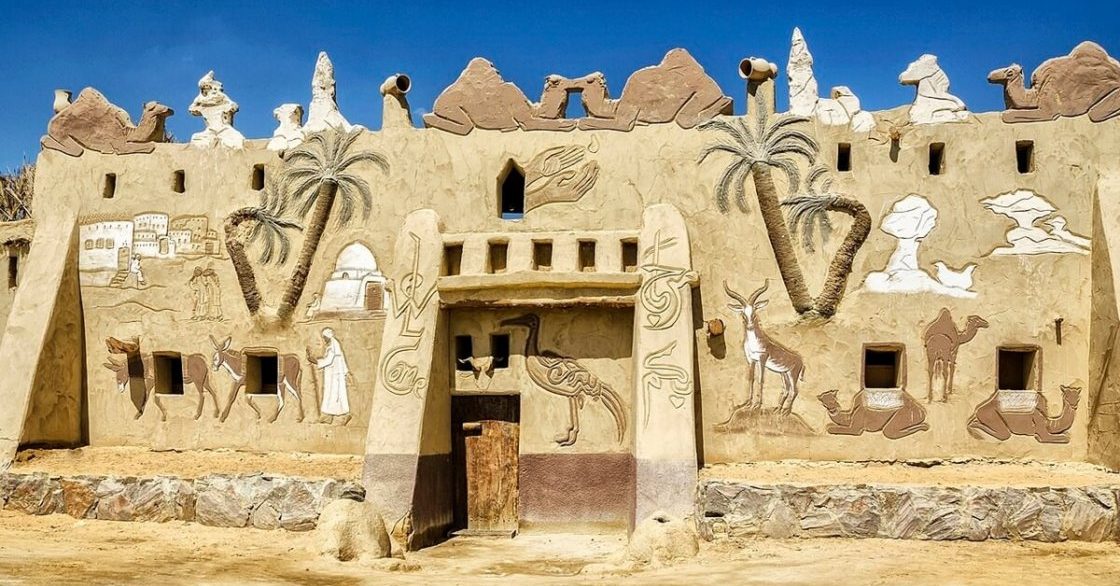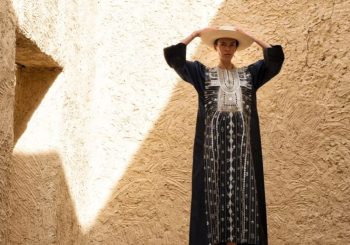In rural Egypt, where the Nile’s fertile banks meet the desert’s edge, mudbrick houses, some standing for centuries, remain both a living tradition and a testament to the enduring local practices of Egyptians.
Mud, a humble blend of earth and water, has stood as a foundational element of human civilization for centuries. As modernity sweeps across the country, these unassuming structures, made from sun-dried bricks of Nile mud and straw, endure as powerful symbols of cultural heritage and community identity.
Mudbrick architecture in Egypt dates back to the Predynastic Period, around 5000 BCE, making it over 7,000 years old. It served to install various structures in place, from homes to temples and workshops.
Mudbrick was a particularly predominant building material for domestic architecture throughout its history. Structures like the Shunet El Zebib, meaning storehouse of raisins, a large mudbrick structure in Abydos, Upper Egypt, exemplify large-scale mudbrick construction. Built circa 2750 B.C., the structure, also known as Shunet or Middle Fort, used to serve as a funerary enclosure.
Ancient Egyptians perfected the craft of mudbrick architecture, creating thick mudbrick by mixing mud from the banks of the river with grass or straw, also known as adobe, to build blocks which were used to erect walls. Due to mudbrick’s ability to store heat and keep the interiors cool by day and warm by night, the design is adapted ingeniously to the desert climate.
While the wealthy sometimes incorporated stone, also used in building temples and tombs, for most Egyptians, mudbrick was the material of daily life, shaping homes, granaries, and even temple enclosures.
The Enduring Relevance of Mudbrick Architecture
Today, these earthen homes are found across Egypt, from the lush Delta to the oases of the Western Desert, such as Dakhla, where restoration projects are using both traditional and modern techniques to preserve their unique properties.
Despite the pressures of urban expansion and changing tastes, mudbrick houses retain a special place in rural communities, valued not just for their practicality but for the memories and traditions they embody.
While mudbrick homes are adopted and adored globally as examples of vernacular architecture and sustainable design, in Egypt, they remain deeply personal—living monuments to a way of life shaped by the Nile.
No discussion of mudbrick architecture in Egypt is complete without mentioning Hassan Fathy, the architect who championed vernacular building methods in the 20th century, which is a type of local construction approach.
Fathy, born in 1900, is especially known for his design of the village of New Gourna near Luxor, a city made entirely of adobe. The village is a reimagining of traditional urban and architectural forms, marked by its thoughtful use of indigenous materials and building methods, along with a keen consideration of environmental conditions and the climate.
Developed during the period of the modern movement, a time of artistic innovation from the late 19th century to the mid-20th century, it illustrated that vernacular design and locally sourced techniques could achieve both sustainability and a sense of social unity.
Fathy believed in empowering local communities to build with their own hands, using materials drawn from the land, and saw in these houses a path to both economic uplift and cultural pride, devoting himself to housing the poor in developing nations.
Today, the sight of a mudbrick home is increasingly rare amid an expanding cement-filled world. With a growing population and the need for development, modern architecture opts for quick and industrial materials such as concrete and cement, which are efficient and durable.
However, sighting mudbrick structures, though outpaced, continues to stir a deep sense of admiration for their quiet beauty and cultural heritage significance.







Comments (0)